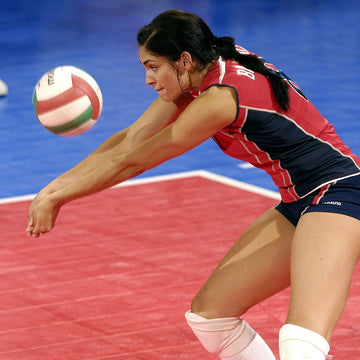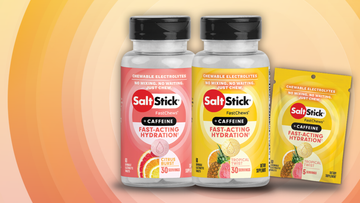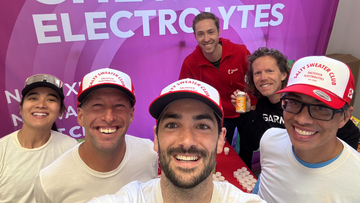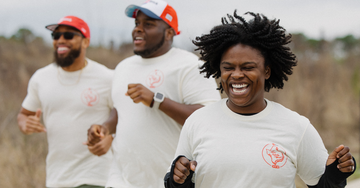
 Many SaltStick customers participate in endurance sports and recognize that electrolyte-replacement is a key part of performance. Perhaps less known is that hydration is equally important to team sport athletes.
Put simply, team sport athletes sweat a lot. The British Journal of Sports Medicine published a study in 2005 that compared sweat rates of football players and runners. During exercise, the football players lost almost four times as much sweat as the runners. Some of this difference is due to body mass and conditioning; however, it is a reminder of the high sweat rates on the field or court.
Dehydration significantly impacts performance, and even a two-percent drop in hydration levels can reduce output. Athletes looking to prevent this slowdown should take steps to maintain proper hydration levels -- which means replacing both lost water and electrolytes.
In this blog post, we examine the scientific literature regarding electrolyte levels and team sports performance, and we provide recommendations for your daily nutrition routine.
Many SaltStick customers participate in endurance sports and recognize that electrolyte-replacement is a key part of performance. Perhaps less known is that hydration is equally important to team sport athletes.
Put simply, team sport athletes sweat a lot. The British Journal of Sports Medicine published a study in 2005 that compared sweat rates of football players and runners. During exercise, the football players lost almost four times as much sweat as the runners. Some of this difference is due to body mass and conditioning; however, it is a reminder of the high sweat rates on the field or court.
Dehydration significantly impacts performance, and even a two-percent drop in hydration levels can reduce output. Athletes looking to prevent this slowdown should take steps to maintain proper hydration levels -- which means replacing both lost water and electrolytes.
In this blog post, we examine the scientific literature regarding electrolyte levels and team sports performance, and we provide recommendations for your daily nutrition routine.
What does the science say?
Some athletes sweat more than others: A study published in 2016 in the Journal of the International Society of Sports Nutrition examined 157 marathon runners and found that about 20 percent of athletes need extra sodium, due to high sweat rates. Additionally, the study found that men tend to lose sodium more quickly than women. This variability exists in team sports, too: The Scandinavian Journal of Medicine & Science in Sports published a 2010 study that found a wide range of sodium loss among football players. “Although football is a team sport, the great individual variability in sweat and electrolyte losses of players in the same training session or match dictates that individual monitoring to determine individual water and electrolyte requirements should be an essential part of a player's nutrition strategy,” the paper concluded. In other words, it is up to the athlete to figure out his or her unique sodium needs and adapt a nutrition routine around those needs. Often, team sports athletes are dehydrated: A 2010 article published in the European Journal of Sport Science found that 91 percent of elite team sport athletes, including soccer, basketball, volleyball and handball, showed symptoms of dehydration approximately three hours before practice. The researchers concluded that these athletes’ hydration practices were adequate to manage sodium and water loss during practice, but that athletes could take extra steps outside of practice to mitigate morning dehydration. Confirming that often, team sports are dehydrated: Another study in 2015 suggests that many elite athletes do not take adequate steps to maintain hydration, concluding: “Most of the athletes start competition dehydrated, fail to compensate sweat loss during the game and continue to be dehydrated, regardless what kind ofWhen do electrolyte levels run low in team sport athletes?
It would be nice to have a simple rule outlining when and how often to replace electrolytes through a form such as SaltStick. It’s not that easy, though, as electrolyte loss varies from person to person. However, a few common trends can help predict when you may need to replenish your salt stores: When you are not adapted to the heat: One of the adaptations your body undergoes when exercising in the heat is reduced sodium content in your sweat. This means that if you are exercising outdoors in late spring or early summer, your sweat will be much saltier than later in the summer after you’ve acclimatized. Keep this in mind at the pickup game next weekend, especially if you notice salt caked onto your clothes after it ends. If you are feeling high levels of fatigue, you may be running low on electrolytes. During long workouts, lasting 90 minutes or greater: Electrolyte loss tends to impact performance when an athlete has been exercising for at least 90 minutes. If it is extremely hot, this window will likely shorten to 60 minutes. Most team sport practices do not last much longer than two hours in the summer heat, but this is long enough to see a performance decline due to dehydration. If you have a long hour workout or practice scheduled, you may want to bring along a bottle of SaltStick. Hot weather, in general: Regardless of how acclimatized you are to the heat, you will sweat much more in hot weather than cold weather. Thus, you will lose more electrolytes. If you are a salty sweater: Some people simply have higher concentrations of sodium in their sweat than others. You can take special lab tests to measure the exact sodium content of your sweat, or you can do a simple taste test. If your sweat tastes really salty or if your clothes routinely end up caked in salt residue, you are probably a salty sweater. This means you will need to replace sodium more often than the average athlete.What should you do about electrolytes?
In most cases, a diet with an abundance of nuts, whole grains, fruits and vegetables will greatly assist in replacing lost electrolytes. These foods contain high amounts of potassium, calcium and magnesium. As for sodium, your body is very good at letting you know when you need to consume more. If you are craving something salty (especially if you worked out hard in the sun), salt your food to taste. If you are curious about what this looks like day-to-day, the folks at Pro Stock Hockey have a nutrition guide* oriented toward a healthy diet that fits in the required nutrients. While the guide is geared toward hockey players, it can be applied to most team sports athletes, who have similar caloric, hydration and nutrient needs.
Click the arrows in the bottom right hand corner to expand to full screen.
*Nutrition Guide from Pro Stock Hockey, an online source for cheap hockey sticks







